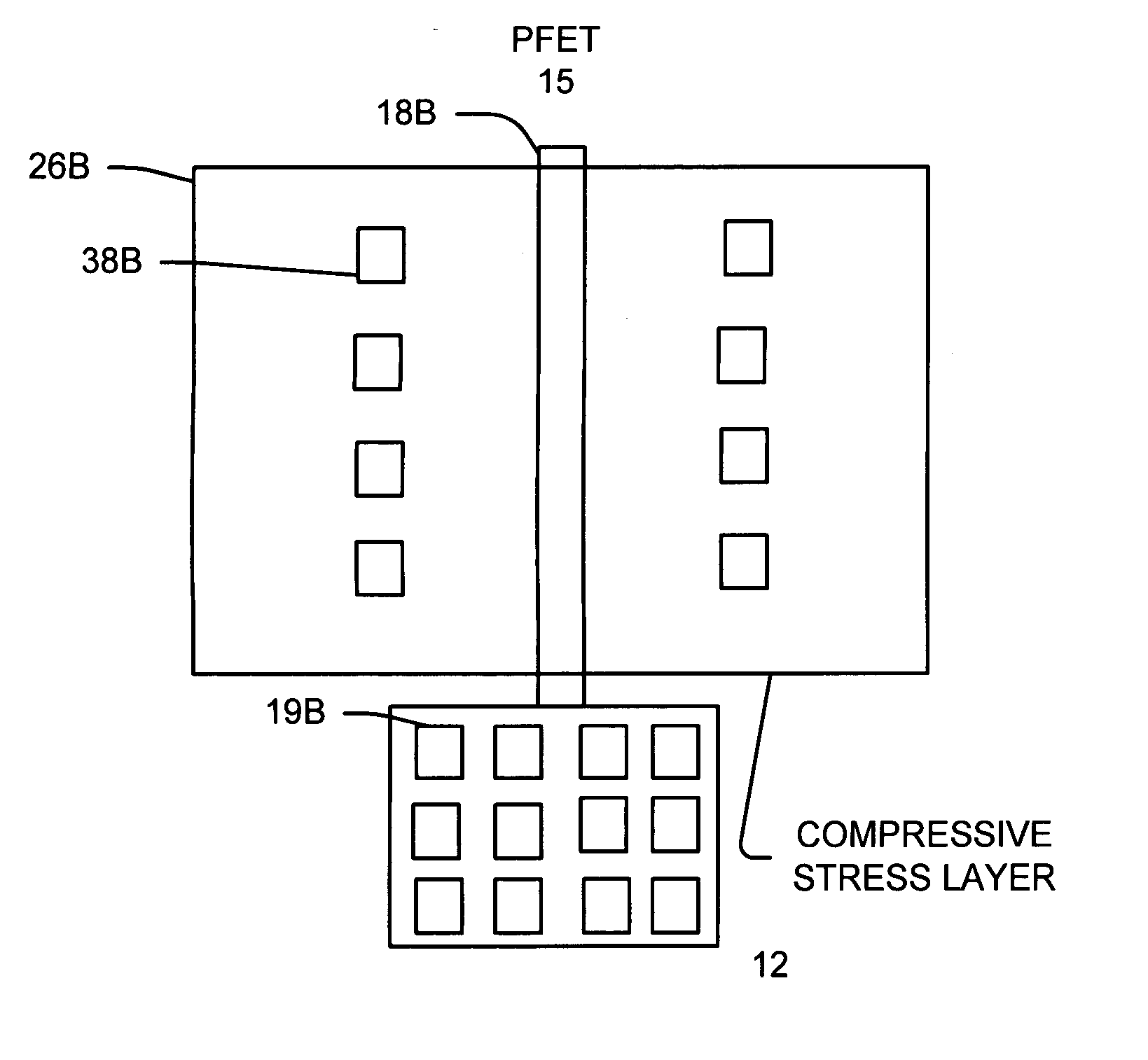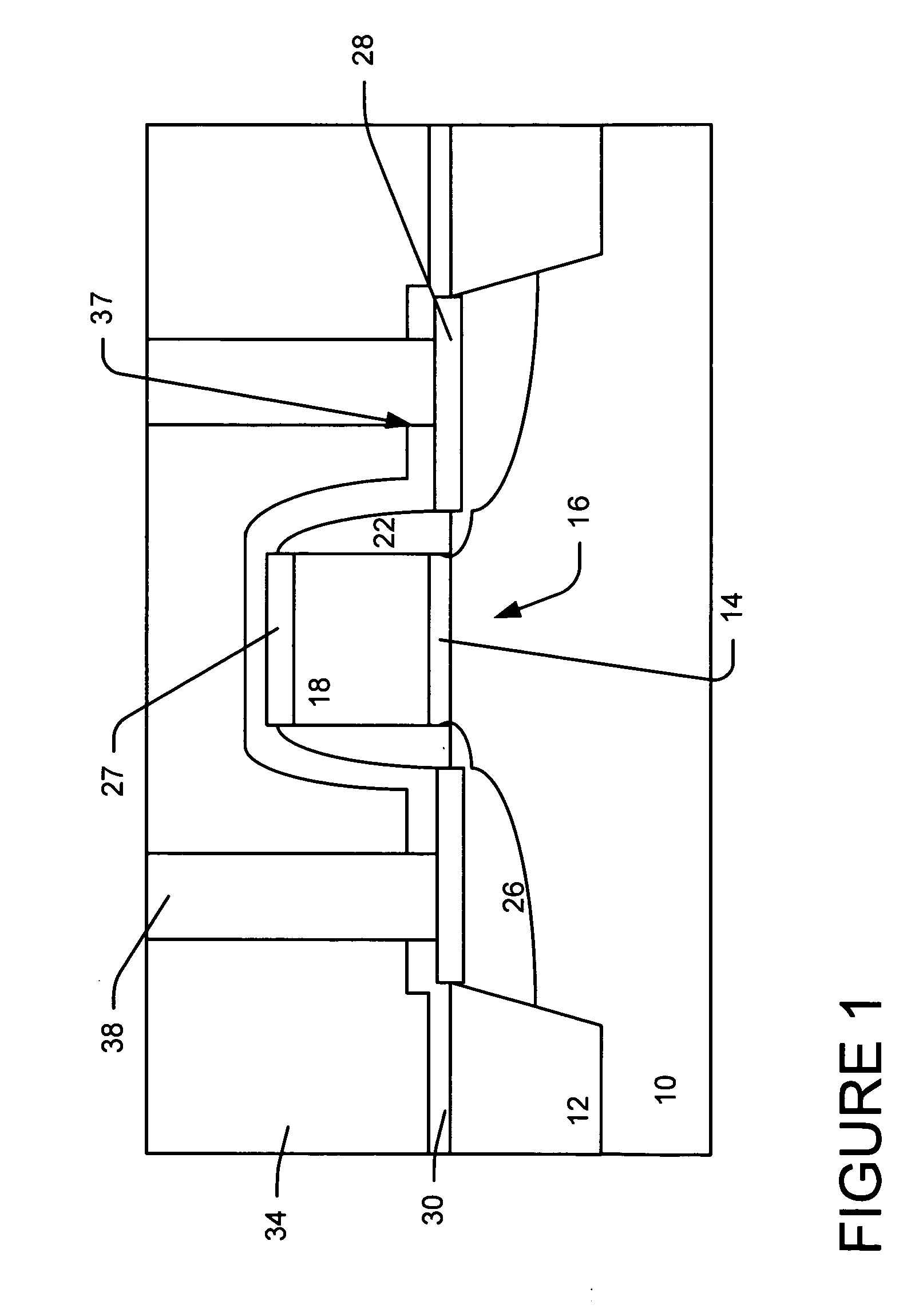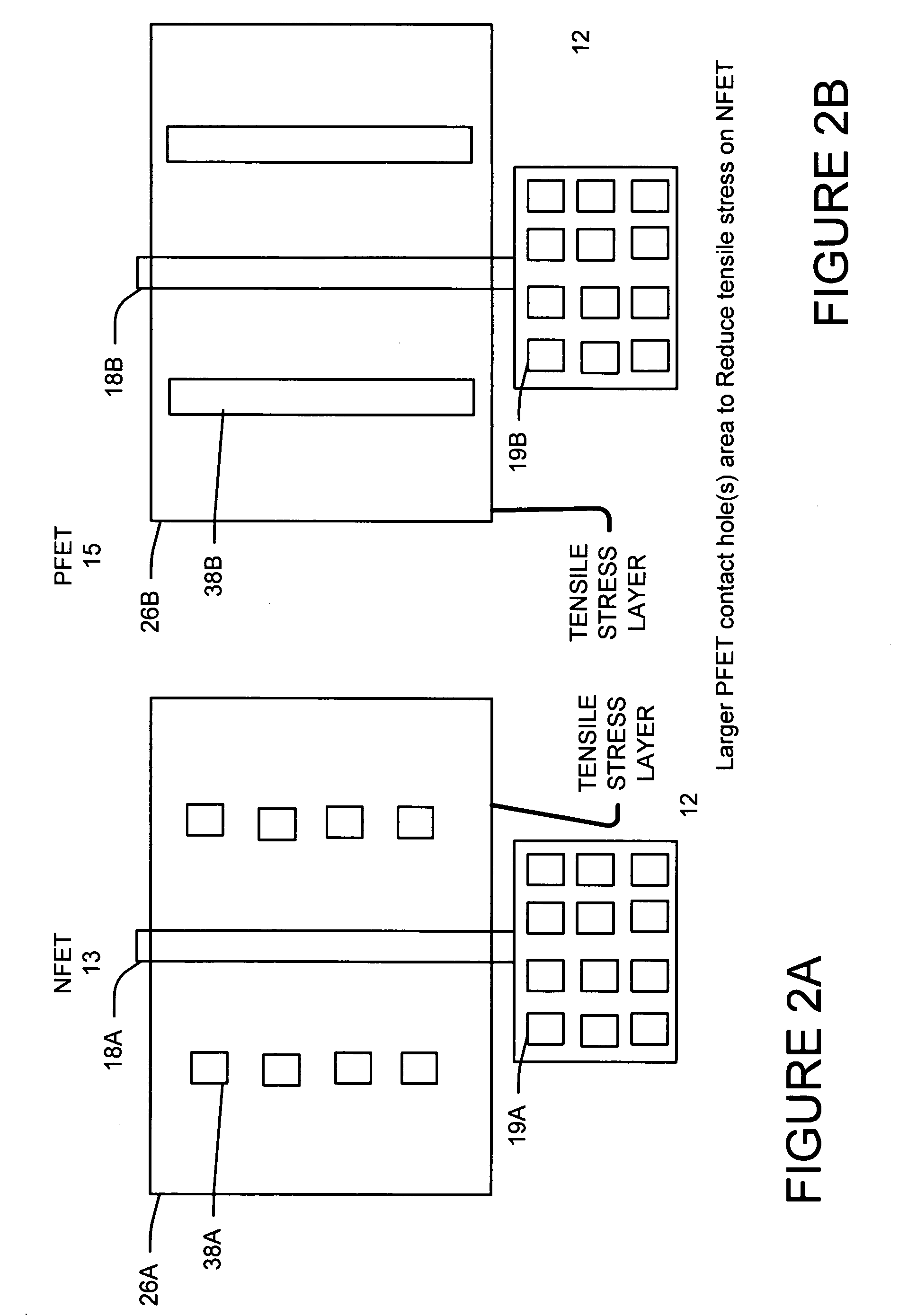Selective stress relaxation of contact etch stop layer through layout design
a technology of layout design and stress relaxation, applied in the direction of transistors, electric devices, solid-state devices, etc., can solve the problems of immense difficulties in conventional transistor scaling, and achieve the effect of reducing repetition
- Summary
- Abstract
- Description
- Claims
- Application Information
AI Technical Summary
Benefits of technology
Problems solved by technology
Method used
Image
Examples
first embodiment
mpressive (ESL) Stress Layer—
[0095]FIGS. 3A and 3B shows another example embodiment where the stress layer 30 is a compressive stress layer that induces a compressive stress on the channel regions.
[0096] The method and structure to form the MOS transistors and other devices is the same as described above. In this embodiment, the stress layer 30 has a compressive stress.
[0097] In an preferred option, the NMOS contact area is larger than the PMOS contact area so the compressive stress from the stress layer on the NMOS channel is less than the compressive stress on the PMOS channel.
[0098]FIG. 3B, shows an improvement of pFET using a highly compressive ESL coupled with a long contact via hole 38A (or closely packed multiple via) for the nFET the reduce the compressive stress on the NFET channel.
[0099] The transistor layout for nFET and pFET can be manipulated to relax the compressive stress of the ESL layer selectively on the nFET by using a long contact via to remove a large volume...
second example embodiment
and Compressive PMOS Stress Layer
[0100] In a second example embodiment, the stress layer is comprised of a NMOS stress layer that is formed over the NMOS region and a PMOS stress layer formed over the PMOS region. The NMOS stress layer is a tensile stress layer that puts a tensile stress on the NMOS channel. The PMOS stress layer is a compressive stress layer that puts a compressive stress on said PMOS channel.
[0101] The stress layers and contact holes for the NMOS and PMOS are adapted and designed to obtain a predetermined stress for the NMOS and PMOS Tx.
[0102]FIGS. 4A and 4B show top down figures of the dual stress layers. FIG. 4A shows a PFET region 15 with a compressive stress layer over the PFET MOS and a NFET region 13 with a tensile stress layer over the NFET MOS TX. The contact holes are adapted to reduce or minimize the stress reducing effects of the contact hole on the stress layers.
[0103] For example, the stress layers and contact holes for the NMOS and PMOS are adapte...
PUM
 Login to View More
Login to View More Abstract
Description
Claims
Application Information
 Login to View More
Login to View More - R&D
- Intellectual Property
- Life Sciences
- Materials
- Tech Scout
- Unparalleled Data Quality
- Higher Quality Content
- 60% Fewer Hallucinations
Browse by: Latest US Patents, China's latest patents, Technical Efficacy Thesaurus, Application Domain, Technology Topic, Popular Technical Reports.
© 2025 PatSnap. All rights reserved.Legal|Privacy policy|Modern Slavery Act Transparency Statement|Sitemap|About US| Contact US: help@patsnap.com



